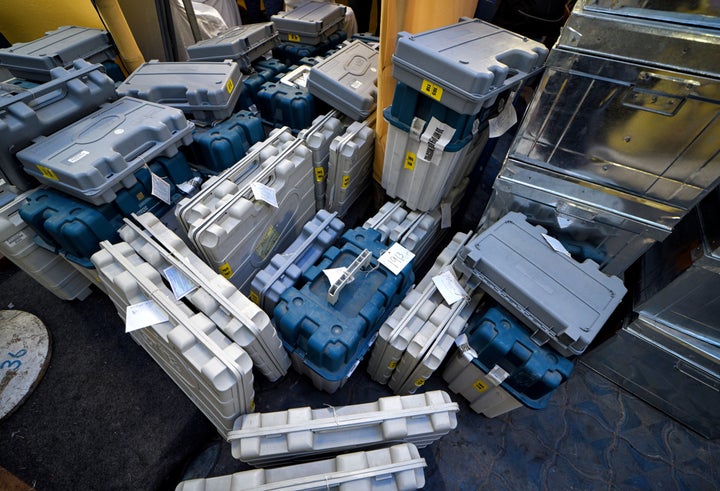
NEW DELHI — An estimated 61 crore Indians voted during the seven-phase general election, with over 64% polling in the final round on Sunday, capping one of the most bitterly fought polls in the country that saw sporadic incidents of violence in West Bengal and other places while political leaders often resorted to personal attacks, including on religious and caste lines.
While the votes would be counted on 23 May, most exit polls predicted a return of the Modi government with some of them giving the BJP-led ruling NDA well above 300 seats out of the 542 on which polls were held. Over 8,000 candidates were in the fray.
For the latest elections news and more, follow HuffPost India on Twitter, Facebook, and subscribe to our newsletter.
Election for one seat, Vellore in Tamil Nadu, has been deferred over alleged use of money power.
In its last update, the Election Commission put the voting percentage at over 64 per cent for the seventh phase, which included Prime Minister Narendra Modi’s Varanasi constituency in Uttar Pradesh.
While the poll panel did not give an official consolidated figure for all seven phases, estimates suggested nationwide voting of over 66% with a turnout of nearly 61 core voters, out of the total 90.99 crore people eligible to vote.
The 2019 elections witnessed differences within the EC with Election Commissioner Ashok Lavasa writing dissent notes on the poll panel’s clean chit to Modi and BJP chief Amit Shah on complaints of violation of model code of conduct.
EVM glitches and incidents of violence in West Bengal and Punjab were reported on Sunday amid poll boycott at some booths. Problems related to electronic voting machines and names missing from electoral rolls were reporters in almost all phases from various places.
The turnout in 2014 was 66.40% a record high. Election Commission officials said the final figure for the 2019 election was still being collated.
In this election, the voter turnout saw a decreasing trend from phase one to phase five.
According to the data provided by EC, in phase one, the turnout was 69.61% It decreased marginally to 69.44% in phase 2 and further to 68.40% in the third round.
In phase four, the turnout stood at 65.50 per cent and in the fifth phase, the turnout dipped to 64.16% but went up marginally to 64.40% in the penultimate phase.
The cumulative turnout for the first six phases stood at 67.34%, which is 1.21 percentage point more than the 2014 LS polls on corresponding seats.
Amongst the state, Madhya Pradesh recorded an increase of 5.92 percentage point over the 2014 polls. Himachal Pradesh also witnessed a higher turnout as compared to last time. The margin was 5.1 per cent.
Chandigarh, on the other hand, recorded a massive dip in turnout as compared to the last LS election. The turnout went down by 10.27%.
Similarly, Punjab also witnessed a lower turnout as compared to 2014 election. The gap was a glaring 5.64%.
In most of the states, the turnout was marginally higher ― by up to 2.5 per cent.
While there were 83.40 crore registered voters in 2014 polls, the number stood at 90.99 crore as on April 23, the day third phase of voting took place.
These include 1.90 crore young voters ― in the age group of 18-19 years. The service voters stood at 18 lakh. These include personnel of the armed forces, central police force personnel and state police personnel who are posted outside their constituencies.
Diplomats and support staff posted in Indian embassies abroad are also counted as service voters.
Out of 18 lakh registered service voters, 16.49 lakh have sent their postal ballots to their respective returning officers as on May 17.
The postal ballots were electronically transmitted to the service voters. They have to download it, fill it and send it by speed post.
Interestingly, the gap between male and female voter turnout has been narrowing since 2009 when it was nine per cent. It went down to 1.4 per cent in 2014. It now tentatively stands at .4 per cent.
In his message at the end of the seven-phased elections, Chief Election Commissioner Sunil Arora said, “Barring some odd incidents here and there that too in such a vast country which ours is with multi-fold formidable challenges in terms of terrain, weather and array of myriad local conditions, thanks to the wisdom and maturity of all the stakeholders the elections passed peacefully and were conducted in free, fair, robust and ethical manner.”